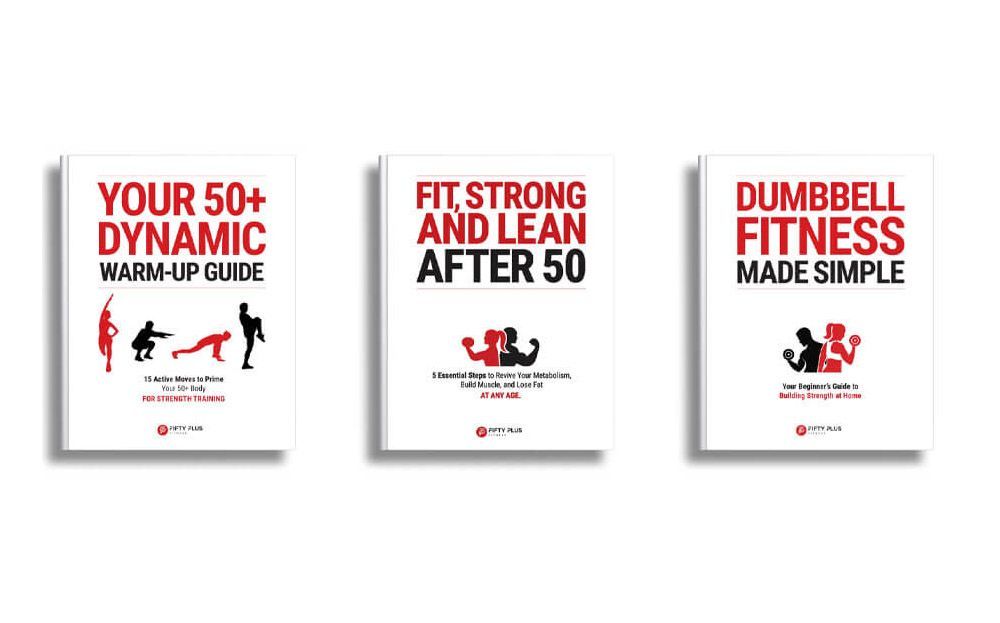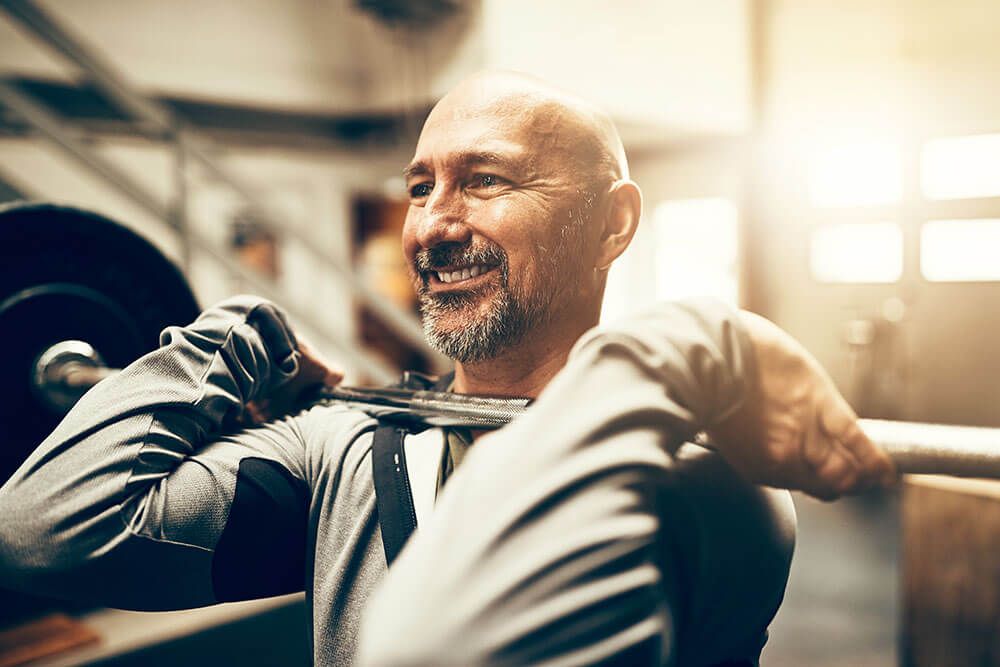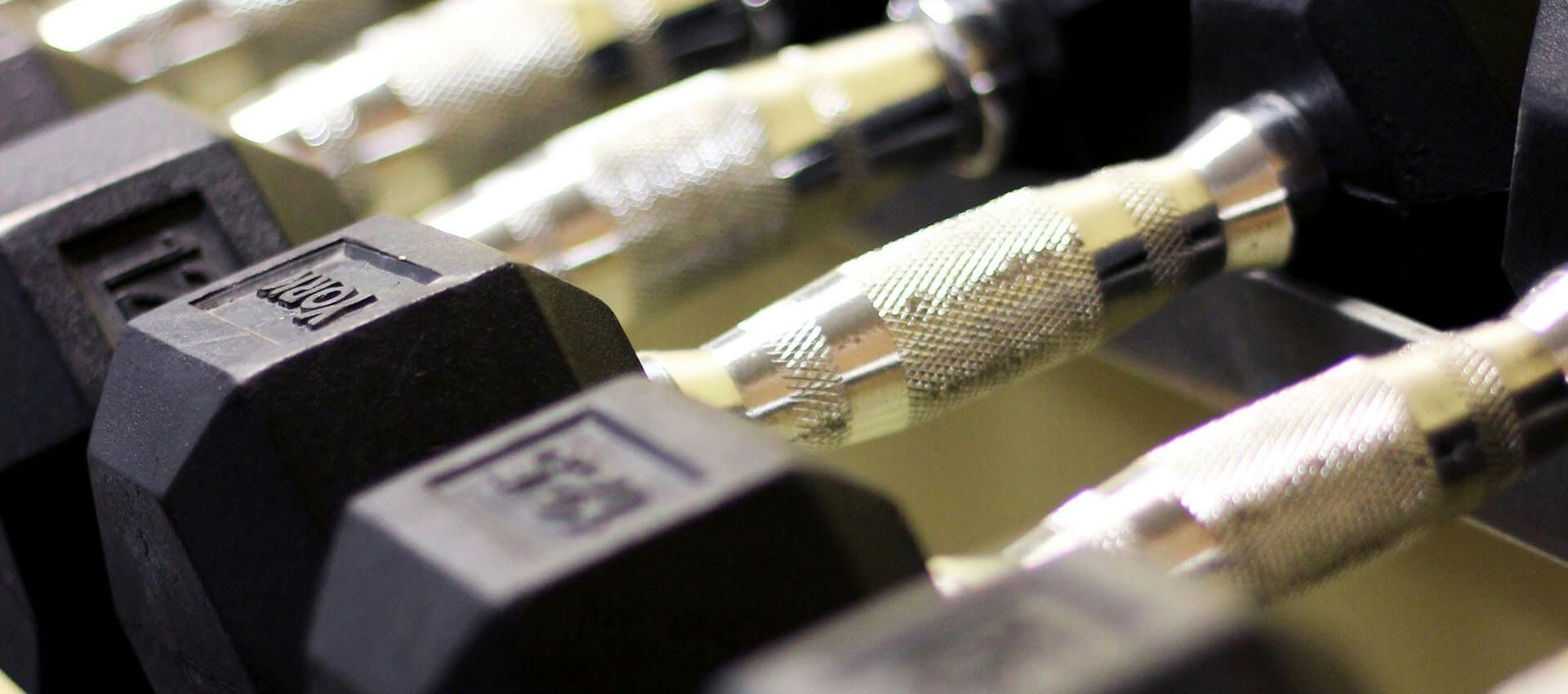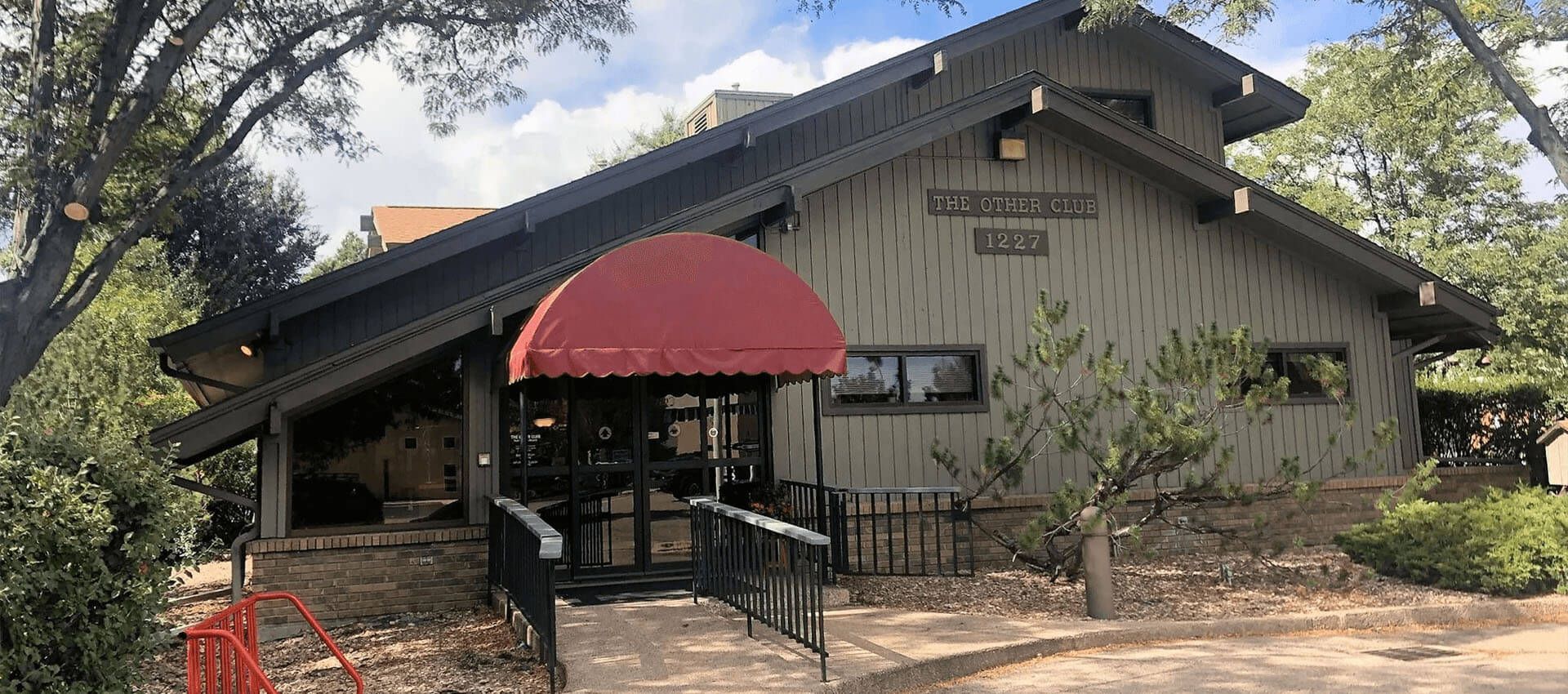What to Get Stronger at Any Age? Embrace Strength Training!

Are you cruising through your 40s, 50s, and beyond and noticing some changes in your body?
Feeling stiff and creaky? Putting on weight? Experiencing low energy?
Me too!
And we are not alone! Many people feel this way and might think their best days are behind them.
But guess what? There’s a form of exercise that can and will change your life – Strength training.
Done consistently, it can become your foundation to look better, move better, and feel better.
Fitness and resistance training are a big part of my life, but it wasn’t always that way. I struggled with weight and had an on-again, off-again relationship with cardio—spending hours on treadmills or running. Yeah, I’d lose weight, but it almost always came back, and I never felt great.
I was committed to clocking in my miles, either on the road or on my treadmill, but I struggled to make progress in the fat loss department.
In my 40s, I was active, but I hadn’t truly committed to strength training. I dabbled here and there, but it never stuck. It wasn’t until my 50s that I finally embraced resistance training—and that’s when everything changed.
Now, at 61, I feel stronger, fitter, and more capable than ever, all because I made lifting a priority.
In my 50s, I started to realize what my body really needed. My metabolism wasn’t ideal, and I had to be more intentional about my nutrition—especially getting enough protein.
But the biggest game-changer? Strength training!
It wasn’t just about building muscle. Nope! It was about feeling better, moving better, and staying independent for the long haul. Not to mention the fact that lifting weights, especially compound moves like deadlifts, helped cure my lower back pain.
Now, don’t get me wrong—cardio still has its place.
YES, it’s important. But it works best when paired with strength training. And today, that’s exactly what I want to focus on—the life-changing power of lifting.
It’s easier to keep the weight off, I feel stronger, I look better, and I move better!
In fact, strength training has become the foundation of my fitness routine, and it’s by far the best form of exercise I’ve ever done.
And here’s the thing: Strength training isn’t just about lifting weights; it’s about empowering yourself to feel and perform better, no matter your age or fitness level. It's the foundation of the strength program I teach here in Fort Collins, Colorado.
So, do you want to learn how strength training can transform your life? Then read on...
Why Strength Training Matters
Strength training isn’t just about gaining muscle—it’s about building a solid foundation for long-term health and staying active as you age.
Why?
Well, as you grow older, preserving muscle becomes much more important.
In fact, as early as your 30s, muscle loss (sarcopenia) naturally begins at a rate of about 3-8% per decade, with that rate accelerating after age 60. This loss of muscle can lead to reduced mobility, a higher risk of injury, and even unwanted weight gain.
That’s why incorporating strength training into your routine is essential for maintaining independence, staying strong, and feeling your best as the years go by. In my humble opinion, it's a must for anyone over 50 years old!
So... what are the amazing benefits of lifting heaving things?
- Boosts Metabolism:
More muscle means a higher resting metabolic rate, helping you burn more calories—even at rest. This makes weight management easier and keeps excess pounds off.
- Strengthens Bones:
Weight-bearing exercises improve bone density, reducing the risk of fractures and protecting against osteoporosis as you age.
- Improves Daily Strength:
Everyday tasks—like carrying groceries, climbing stairs, or playing with your kids or grandkids—become easier when you build muscle.
- Elevates Mood and Energy:
Strength training releases endorphins, those feel-good hormones that boost your mood and keep you energized throughout the day.
- Supports Joint Health:
Stronger muscles provide better joint stability, helping alleviate pain from arthritis or previous injuries.
Strength training doesn’t just help you look and feel better—it improves your quality of life.
As fitness expert Sal Di Stefano put it in an episode of the Mind Pump podcast:
“In terms of longevity and health, studies are showing resistance training is the best form of exercise.”
It strengthens muscles, protects joints, enhances posture, and keeps your metabolism revved up.
More importantly, it helps you stay independent, strong, and mobile as you age.
Whether you’re just starting or have years of experience, adding strength training to your routine will help you feel empowered, energetic, and capable of tackling life’s challenges.
My message: Start lifting today. Your future self will thank you.
The Right Approach to Strength Training
When it comes to strength training, there’s no one-size-fits-all solution. Everyone has unique needs and goals, especially as we hit our 40s, 50s, and beyond.
Start with Bodyweight Exercises
When I said that strength training isn’t just about lifting weights, I meant it. Strength training involves using your muscles against resistance to gain strength and build muscle. While it’s often associated with weights, there are many ways to do it.
One of the most effective is calisthenics, also known as bodyweight training, where you use your own body as resistance. And the best part? You don’t need any equipment. Pretty great, right?
Before moving on to weight machines or free weights, you can start with bodyweight exercises. These are fantastic for building strength, improving flexibility, and enhancing balance. Some excellent examples include:
- Bodyweight Squats: Strengthen your legs and core.
- Push-ups: To work your chest, shoulders, and triceps.
- Planks: To improve core stability.
There are many more! For example, check out my post for pickleball players on exercises for strength, agility, and more.
In my opinion, bodyweight exercises are the best way if you are just starting out. They allow you to build a solid foundation before advancing to weights or more complex movements.
Living in Fort Collins, Colorado makes it easy for me to add a bodyweight workoug into my routine. The city offers so many opportunities to stay active. And I can do bodyweight exercises anywhere.
Same for you!
But whether you prefer the great outdoors or an indoor workout, one thing is essential—resistance training should be part of your routine..
Forms of Strength Training
Resistance training can take various forms, including free weights, weight machines, and resistance bands. Each method has its benefits:
- Free Weights: Dumbbells, kettlebells, and barbells help you build strength, improve coordination, and engage multiple muscle groups at once. Exercises like rows and swings boost overall balance and functionality.
- Weight Machines: These provide controlled movements, making them a great choice for beginners learning proper form while building strength.
- Resistance Bands: Lightweight, portable, and versatile, resistance bands let you train anywhere—at home, in the gym, or even on the go.
No matter which method you choose, consistency is key to seeing results.
The Importance of Progression
Building strength isn’t just about lifting weights—it’s about progressing over time. This means:
- Gradually increasing weight or resistance
- Adding more reps or sets
- Challenging your body with new exercises
A structured progression helps you avoid plateaus, prevent injuries, and continue making gains. Small, steady improvements lead to big results..
Set Realistic Goals
When starting out, focus on setting achievable and specific goals. For example, instead of saying, "I want to get stronger," aim for "I want to perform five push-ups in a row." As you achieve these goals, you can set new ones, keeping your fitness journey engaging and fulfilling.
Strength Training for Men: What Really Works
As you hit your 40s (and beyond), strength training isn’t just about lifting heavy—it’s about training smarter. With natural changes in hormones, recovery time, and muscle maintenance, your approach needs to evolve. Here’s how to keep making gains and staying strong for life:
- Prioritize Compound Movements: Squats, deadlifts, and bench presses should be your go-to. These big lifts engage multiple muscle groups at once, helping you build strength efficiently.
- Recovery is Just as Important as Training: Gone are the days of bouncing back after a brutal workout overnight. Your muscles need time to rebuild, so prioritize rest days, active recovery, and quality sleep to stay injury-free and make steady progress.
- Fuel Your Body the Right Way: Protein is king when it comes to muscle repair and growth. But don’t ignore healthy fats, fiber, and nutrient-dense foods—they keep your energy levels up and your body performing at its best.
By training smarter, focusing on recovery, and fueling properly, you can stay strong, feel great, and continue making progress for decades to come.
Want a deeper dive into strength training for men? Check out
Strength Training for Men for more tips and strategies.
Strength Training for Women: Empowering Approaches
Strength training is incredibly beneficial for women, especially as they age, helping to maintain overall health, strength, and vitality. Here are a few key considerations:
- Embrace the Weights: While many women avoid weightlifting due to the misconception that it will lead to excessive bulk, it’s important to understand that strength training is essential for improving bone density and maintaining a healthy weight. Regular resistance training helps prevent osteoporosis, builds lean muscle, and supports long-term weight management.
- Improve Balance and Coordination: Strength training enhances balance and stability, which becomes crucial as women age. Improved balance reduces the risk of falls—a common concern for older women—and helps maintain independence in daily activities.
- Focus on Core Strength: Developing core strength plays a key role in stability, posture, and overall functional fitness. A strong core makes everyday tasks like lifting, bending, or reaching easier and more manageable, while also helping to prevent back pain.
Strength training not only improves physical health but also fosters empowerment and confidence. Women of all ages can benefit from incorporating weights, bodyweight exercises, or resistance bands into their routines. By doing so, you’ll build the foundation for a healthier, more active, and balanced life, now and in the future.
Starting at Home or Joining a Gym: Which is the Best Strength Training for You?
Getting started with strength training at home is simple and effective.
Personally, I began by purchasing an inexpensive set of dumbbells and incorporating basic exercises along with bodyweight training. Dumbbells are one of the most versatile and efficient tools for resistance training—they’re affordable, can target virtually every muscle group, and can be used almost anywhere.
With just a basic set of dumbbells, you can perform a wide range of exercises that provide a full-body workout, improving your strength and fitness in a short time. While many people associate dumbbells with bicep curls, they offer far more than that.
Dumbbells are perfect for compound movements that engage multiple muscles and joints simultaneously, delivering a challenging and dynamic workout.
If you decide to invest in a set, stay tuned because I’ll be sharing detailed workouts using dumbbells as the foundation for a complete home fitness program.
However, embarking on a fitness journey on your own can be challenging. That’s where a supportive community, such as a gym, can come in handy. One of my favorite places to train is The Other Club in Fort Collins, Colorado. It’s what I like to call Fort Collins’ friendly alternative to big-box gyms, especially for those over 40 or 50. You’ll find a welcoming environment and experienced trainers who can guide you toward achieving your goals.
When choosing a gym—whether in Fort Collins or wherever you are—make sure it fits your needs and comfort level. If you're new to working out or looking for guidance, finding a gym with supportive personal trainers can make all the difference.
The key to success, whether at home or in a gym, is to embrace every day exercise as as part of your everyday life. With the right mindset, you can build strength, improve your health, and feel empowered wherever you choose to train.
Embrace Your Strength Training Journey
Remember, strength training is not a race; it’s a lifelong journey.
Whether you’re a seasoned athlete or just starting, the key is to stay consistent and committed. Embrace the process, and don’t be afraid to seek help from fitness professionals.
As strength coach Layne Norton once said, “Progress is progress, no matter how small.” Celebrate each milestone, and keep pushing forward.
In summary, strength training is a powerful tool that can help you build a healthier, more active lifestyle. It’s never too late to start, and the benefits far outweigh any challenges you may face.
So, whether you’re in Fort Collins or anywhere, embrace strength training and unlock a healthier, stronger you.












